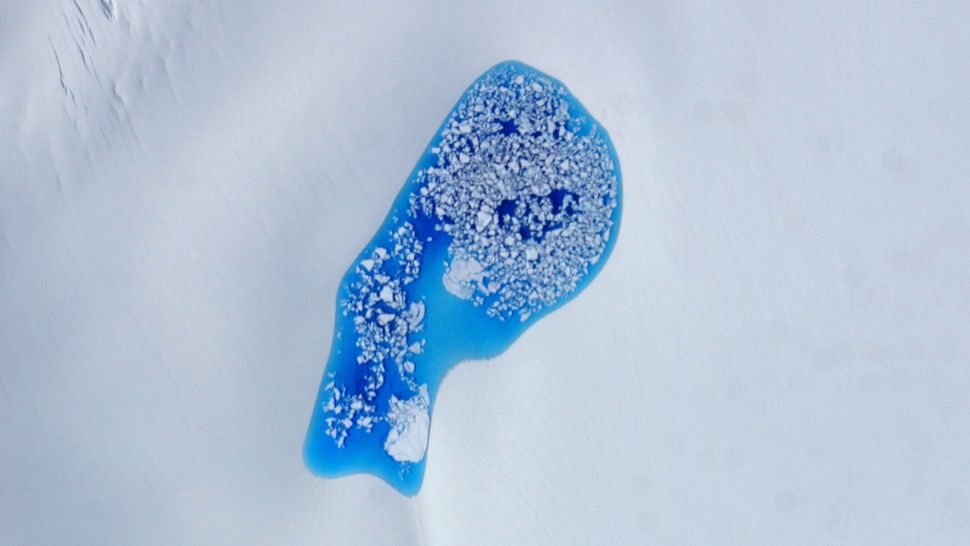Earth from space: Massive blue 'melt pond' in Arctic glacier is an eerie sign of things to come [View all]
By Harry Baker
published October 29, 2024
A 2014 photo shows a massive, iceberg-littered pool of vibrant blue meltwater sitting alone on top of a glacier in Alaska. Similar "melt ponds" are becoming increasingly common in the Arctic due to climate change and are further accelerating the rate of ice loss across the region.

An aerial photo of a vibrant pond of blue water surrounded by snow
NASA's ER-2 airplane spotted the massive melt pond after it appeared on an unnamed glacier in Alaska. Its vibrant blue color is a result of how the submerged ice absorbs sunlight. (Image credit: NASA/MABEL/ER-2)
This 2014 aerial photo shows what looks like an unusually large and deep puddle of vibrant blue meltwater sitting on top of an unnamed Alaskan glacier. Similar melt ponds are becoming more common across the Arctic due to climate change and are further accelerating the rate at which the region is losing its ice.
The striking melt pond, which is littered with hundreds of tiny icebergs, is around 2,300 feet (700 meters) across at its widest point. The pool's vibrant blue color makes it seem like it is exceptionally deep. However, this is likely just an illusion caused by the ice below. On average, Arctic sea ice melt ponds are only around 9 inches (22 centimeters) deep, according to a 2022 study. However, it is unclear exactly how deep this puddle is.
Zoomed-out versions of the photo show that the melt pond was surrounded by nothing but snow for miles. Normally, melt ponds are grouped close together in clusters. It is unclear what caused this pond to grow so large in isolation.
The icy lagoon was spotted by the Multiple Altimeter Beam Experimental Lidar (MABEL) instrument onboard NASA's ER-2 airplane — a special research plane that can fly more than twice as high as commercial jets. The aircraft was sweeping the area as part of a wider survey of Arctic melt ponds, and it captured hundreds of similar photos. But this pond was one of the largest observed, according to NASA's Earth Observatory.
More:
https://www.livescience.com/planet-earth/arctic/earth-from-space-massive-blue-melt-pond-in-arctic-glacier-is-an-eerie-sign-of-things-to-come
